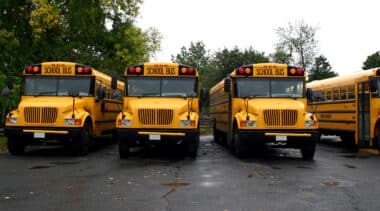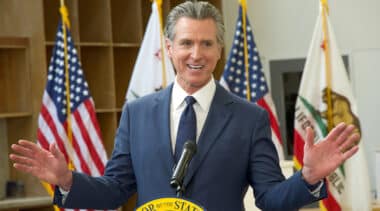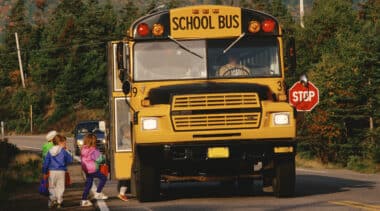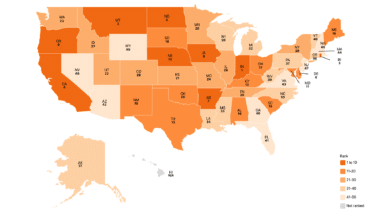Aaron Garth Smith is the director of education reform at Reason Foundation.
Smith works extensively on education finance policy and his writing has appeared in dozens of outlets including National Review, The Hill, and Education Week.
Smith graduated from the University of Maine with a bachelor's degree in business administration and earned a Master of Business Administration from Texas A&M University.
He is based in Phoenix, Arizona.
-
Examining the latest K-12 public school enrollment data and trends
Nationwide, public school enrollment has fallen by 1.28 million students since the start of COVID-19.
-
How LAUSD can deal with budget deficit, declining enrollment
California ranks fourth in the nation in public school spending growth since 2002, which has helped masked the Los Angeles Unified School District's financial mess.
-
Which K-12 finance systems foster school choice?
A look at education funding portability in five states and why it matters.
-
Don’t trust the federal government with the nation’s largest school choice program
A federal school choice program would establish a one-stop shop for Congress to impose nationwide mandates on private schools.
-
Frequently asked questions about Montana school finance reform
Montana employs a hybrid education funding formula that has features of multiple formula types—student-centered, resource-based, and program-based.
-
The push for greater oversight of homeschoolers
A proposal in Illinois would interfere with the thousands of homeschool parents who are deeply invested in seeing their children succeed.
-
Southern California school districts are serving fewer students and facing massive budget deficits
Since the COVID-19 pandemic, families have also increasingly sought public school alternatives such as charter schools, private schools, and homeschooling.
-
Funding Education Opportunity: Public schools closing as enrollments decline
Plus, Tennessee, Wyoming, and South Carolina policymakers look to advance school choice proposals.
-
Public school enrollment is plummeting. Here are five things policymakers can do about it.
Between the 2019-2020 and 2022-2023 school years, public schools across the country lost 1.2 million students.
-
Public school closures were on the upswing in 2024
In the 15 states examined, public school closures increased in 2023-24.
-
What the birth dearth means for public schools
Fewer students and increased competition will require public institutions to be dynamic and responsive.
-
Florida Amendment 1 would implement partisan elections for district school boards
Currently, school board elections in Florida are nonpartisan.
-
California taxpayers spent $4 billion on 401,000 students no longer in the state’s public schools
The Los Angeles Unified School District (LAUSD) collected $508 million for 50,400 ghost students in the 2022-23 school year.
-
The cost of state hold harmless policies in K-12 education
With widespread public school enrollment losses in the wake of the COVID-19 pandemic, the financial costs of some hold harmless policies have increased exponentially.
-
Four takeaways from the U.S. Census Bureau’s latest school finance data
With federal data from the 2022 school year now available, policymakers can better grasp how the COVID-19 pandemic affected public school budgets.
-
With federal pandemic aid expiring, Florida shows states how to cost-effectively boost student achievement
Unlike in most states, public schools in Florida don’t have a monopoly over students and their funding.
-
Public education at a crossroads: A comprehensive look at K-12 resources and outcomes
Examining key education spending, enrollment, staffing, and student performance data over the past two decades in all 50 states.
-
Five key trends in education spending, teacher salaries, staffing and test scores
Total inflation-adjusted education spending increased by 25% per student while average teacher salaries fell by 0.6% from 2002 to 2020.


















